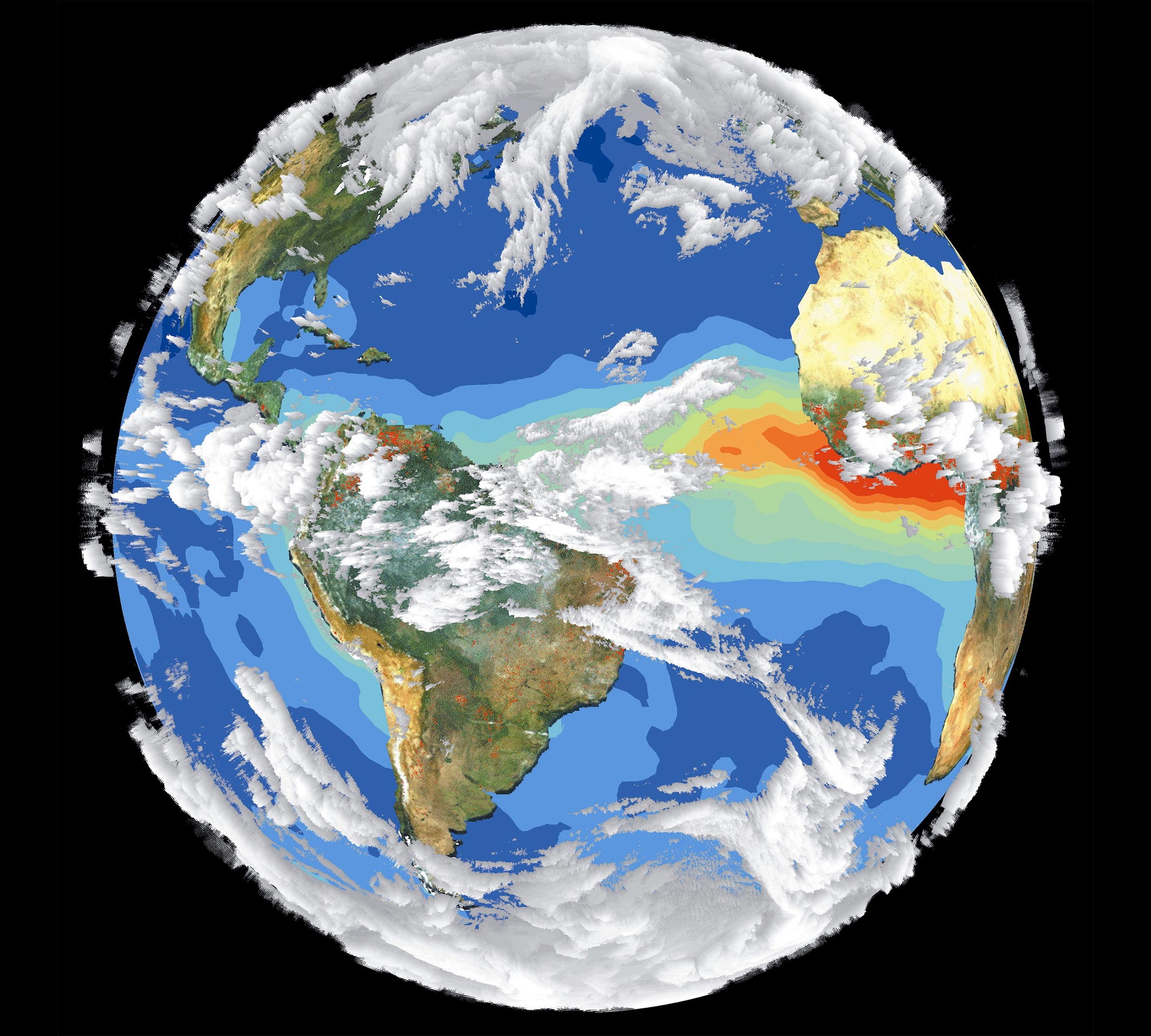Human-driven climate change is increasingly shaping the Earth’s living environments. Rising temperatures, rapid shifts in rainfall and seasonality, and ocean acidification are presenting altered environments to many animal species. How do animals adjust to these new, often extreme, conditions?
Animal nervous systems play a central role in both enabling and limiting how they respond to changing climates. Two of my main research interests as a biologist and neuroscientist involve understanding how animals accommodate temperature extremes and identifying the forces that shape the structure and function of animal nervous systems, especially brains. The intersection of these interests led me to explore the effects of climate on nervous systems and how animals will likely respond to rapidly shifting environments.
All major functions of the nervous system – sense detection, mental processing and behavior direction – are critical. They allow animals to navigate their environments in ways that enable their survival and reproduction. Climate change will likely affect these functions, often for the worse.
Shifting sensory environments
Changing temperatures shift the energy balance of ecosystems – from plants that produce energy from sunlight to the animals that consume plants and other animals – subsequently altering the sensory worlds that animals experience. It is likely that climate change will challenge all of their senses, from sight and taste to smell and touch.
Animals like mammals perceive temperature in part with special receptor proteins in their nervous systems that respond to heat and cold, discriminating between moderate and extreme temperatures. These receptor proteins help animals seek appropriate habitats and may play a critical role in how animals respond to changing temperatures.
Climate change disrupts the environmental cues animals rely on to solve problems like selecting a habitat, finding food and choosing mates. Some animals, such as mosquitoes that transmit parasites and pathogens, rely on temperature gradients to orient themselves to their environment. Temperature shifts are altering where and when mosquitoes search for hosts, leading to changes in disease transmission.
Climate change is pushing more and more mosquitoes to take humans as their preferred hosts.
How climate change affects the chemical signals animals use to communicate with each other or harm competitors can be especially complex because chemical compounds are highly sensitive to temperature.
Formerly reliable sources of information like seasonal changes in daylight can lose its utility as they become uncoupled. This could cause a breakdown in the link between day length and plant flowering and fruiting, and interruptions to animal behavior like hibernation and migration when day length no longer predicts resource availability.
Changing brains and cognition
Rising temperatures may disrupt how animal brains develop and function, with potentially negative effects on their ability to effectively adapt to their new environments.
Researchers have documented how temperature extremes can alter individual neurons at the genetic and structural levels, as well as how the brain is organized as a whole.
In marine environments, researchers have found that climate-induced changes of water chemistry like ocean acidification can affect animals’ general cognitive performance and sensory abilities, such as odor tracking in reef fish and sharks.
Behavior disruptions
Animals may respond to climate adversity by shifting locations, from changing the microhabitats they use to altering their geographic ranges.
Activity can also shift to different periods of the day or to new seasons. These behavioral responses can have major implications for the environmental stimuli animals will be exposed to.
(Credit:Rapeepong Puttakumwong/Moment via Getty Images)
Shifting climates are driving some snake species into forested habitats, and the subsequent increased predation on nesting birds may push above sustainable levels.
For example, fish in warming seas have shifted to cooler, deeper waters that have dramatically different light intensity and color range than their visual systems are used to. Furthermore, because not all species will shift their behaviors in the same way, species that do move to a new habitat, time of day or season will confront new ones, including food plants and prey animals, competitors and predators, and pathogens.
Behavioral shifts driven by climate change will restructure ecosystems worldwide with complex and unpredictable outcomes.
Plasticity and evolution
Animal brains are remarkably flexible, developed to match individual environmental experience. They’re even substantially capable of changing in adulthood.
But studies comparing species have seen strong environmental effects on brain evolution. Animal nervous systems evolve to match the sensory environments of each species’ activity space. These patterns suggest that new climate regimes will eventually shape nervous systems by forcing them to evolve.
When genetics have strong effects on brain development, nervous systems that are finely adapted to the local environment may lose their adaptive edge with climate change. This may pave the way for new adaptive solutions. As the range and significance of sensory stimuli and seasonal cues shift, natural selection will favor those with new sensory or cognitive abilities.
Some parts of the nervous system are constrained by genetic adaptations while others are more plastic and responsive to environmental conditions. A greater understanding of how animal nervous systems adapt to rapidly changing environments will help predict how all species will be affected by climate change.
Sean O’Donnell is a Professor of Biodiversity, Earth and Environmental Science and Biology at Drexel University. This article is republished from The Conversation under a Creative Commons license. Read the original article.
Note: This article have been indexed to our site. We do not claim legitimacy, ownership or copyright of any of the content above. To see the article at original source Click Here












